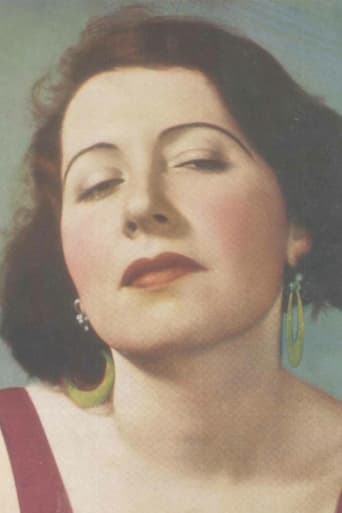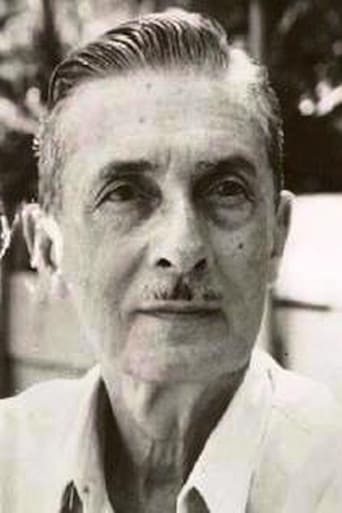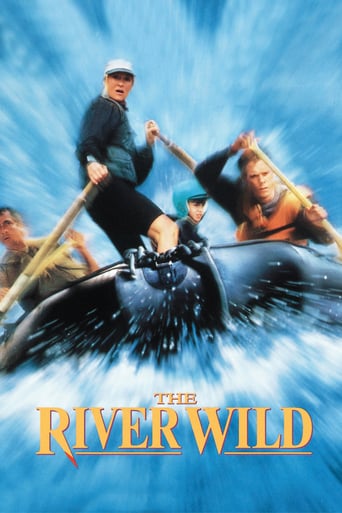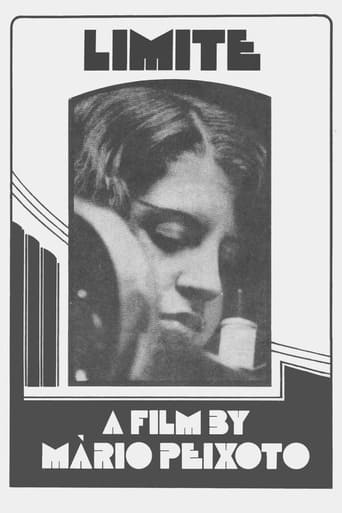

Limite (1931)
Adrift in the vast expanse of the ocean, a solitary boat carries three castaways—a man and two women. Stranded and devoid of any glimmer of rescue, they find solace in recounting the tales of their lives to one another. As they delve into their personal narratives, reminiscing about the circumstances that led them to this desolate predicament, they navigate through the depths of three distinct destinies. Bound by the confines of their shared space, every aspect of their existence becomes a boundary, underscoring their plight.
Watch Trailer
Cast
Similar titles

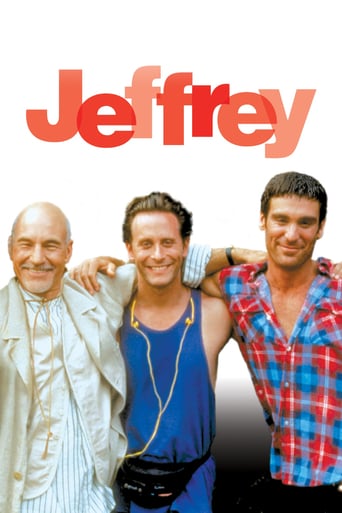

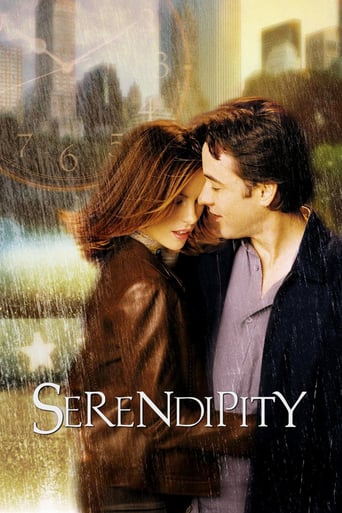
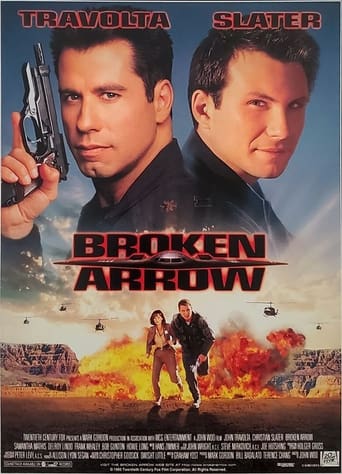
Reviews
Such a frustrating disappointment
Load of rubbish!!
It's easily one of the freshest, sharpest and most enjoyable films of this year.
One of the film's great tricks is that, for a time, you think it will go down a rabbit hole of unrealistic glorification.
Watch "Limite" was one of the most rewarding experiences of my life. In the first time I watched, I was quite confused about the film claim, which left me in doubt about whether I liked the movie or not. But, in the second time I saw, I could see why "Limite" is one of the most acclaimed films of Brazilian cinema by the critics. With a very unusual story and a very experimental direction, "Limite" transports us into a universe with images of rare beauty, thanks to the direction of Mario Peixoto, which capture, with your camera, very bold and meticulous frames. Due to its experimental aspect, it can be said that "Limite" is one of the most avant-garde films of his time, and even to the present time it sounds like a very advanced film. It's a pity that a film with such quality as "Limite" is so despised by the public, it deserves much more recognition and publicity than it has.
At first glance, it might appear somewhat ironic that LIMITE remains the one work with which most people identify multi-talented Mario Peixoto today. While Peixoto kept writing poetry, essays and various manuscripts throughout his life, this film remained his one contribution in the cinematic world. After its initial release in 1931, the film was virtually unavailable for decades, making it hard for the general public and historians alike to judge for themselves if this so-called "masterpiece" which Peixoto had produced in his youth really was worthy of so much acclaim. However, recently I had the opportunity of seeing LIMITE on a big screen with live musical arrangement, and I am forced to admit that the film's current status as a phenomenon has rather little to do with its unavailability; it remains genuinely impressive, starkingly beautiful to this day.The story finds several mentally defeated persons recalling their past in a boat. Peixoto takes use of several flash-backs which might appear confusing, especially since there are only some very few title cards present throughout this silent film. However, exactly what the story is about is less relevant (and interesting) than how it is being visually executed, and furthermore the emotional impact it leaves upon us. Through his extensive use of close-ups, landscapes, storms and shadows, Peixoto manipulates us into imagining his visions as being truly real, physical presences. For instance, when showing us a group of people enjoying a Charlie Chaplin-short at a theater, his way of visually describing the term laughter becomes so convincing that we nearly forget that we, in fact, are observing another group of observers; they become part of us, and we flow within one another into one eternity.Peixoto covers laughter, and he covers death, nature, despair and small-town life. You find yourself sitting at the edge of your seat not because you're wondering what's going to happen next, but due to what you're observing each moment. Even though it is evident that Peixoto was heavily inspired by earlier experimental film directors (the masters of German expressionism come to mind), one of the major reasons why it leaves such a profound impact is precisely because it was made at such a late point in the silent era; too late to make an impact on the silent medium, it is almost disturbing how bluntly it reveals exactly what was lost when silent films died. For a long time, the focus on dialogue in talking films made directors blind, forcing the film medium to take one huge step backwards in terms of aesthetics. Of course, things have changed to the better since that time, but LIMITE still remains a thought-provoking reminder as to not forget that film, after all, first and foremost is a visual medium, where beauty should play a central part.
'Limite' is a great, poetic, inspiring mystery ride. I dare to say that it is the visually best film I've seen from that era. The slow, unique pace and the repeating structure of its main musical motif, Erik Satie's theme 'Gymnopédie', intensify the suggestive effect of the immensely beautifully captured images in a magnificent montage and unfolds one of the great philosophical questions of the 20th century: the unsolvable contradiction between transience of human life and the eternity of the universe. The story is hard to access, because Peixoto almost always works with flashbacks and rare title links, so we have to solve the puzzle for our own. Nevertheless, it's the imagery that is so fascinating, full of suicidal feelings, desperateness, tristesse and wonderfully compositions of nature - trees, foggy landscapes, waves. An unparalleled cinematic experience I will not forget and of course highly recommended.
"Limite", filmed in 1930 and first exhibited in 1931, has over the last 70 years become a legendary cult movie in Brazil, voted several times as one of the best Brazilian movie ever made, and may be considered as the only reference for Brazilian poetic-experimental films of the silent area. What we have here is a film that pretends to combine the idea of a pure, "absolute" cinema - not tied to "realistic" narrative structures and trusting overall the camera eye as the protagonist - with a poetic reflection on memory and time, a theme explored also in a 6-volume novel by Peixoto called "The uselessness of each one". As many young Brazilians from rich families who later formed the intellectual and artistic elite at the beginning of the 20th century, Peixoto received important artistic stimulus from Europe. In 1927, at the age of 19, Peixoto spent almost a year at the "Hopedene School" in Willingdon near Eastbourne, Sussex, where he discovered a certain inclination towards acting and developed a strong appreciation for the cinema. Peixoto would return to Europe in 1929 with the expressive intension to see the latest cinema productions. Fascination for the cinema, contacts with critic/ writer Octavio de Farias, cameraman Edgar Brazil, director Adhemar Gonzaga, (Peixoto participated in the shooting of "Barro Humano" (Human Clay, a film from 1927) and the discussions held in the Chaplin Club, laid the ground work for the idea of making his own movie, where he would figure as an actor. The Chaplin Club, made up of a loose circle of friends, was founded in 1928 and until 1930 published a magazine called "The fan" dedicated to debates on the esthetics of silent cinema. According to Peixoto, he got his final inspiration for "Limite" in august 1929. While walking through Paris he saw a photograph in the 74th edition of the French magazine "VU", a magazine which Man Ray had worked for, by the way. It was this picture that led to the writing of the scenario for "Limite", published only in 1996. The hand-written scenario was then offered to director friends Gonzaga and Mauro. But both declined. They advised him to make the film himself and to hire cameraman Edgar Brazil who had the necessary experience to guarantee the realization of the project. Shooting then began in mid 1930, using specially imported film material with a high sensitivity for grey scales and stills from Limite were soon distributed and, in an effort to raise the public expectation, they were frequently presented as photos from a new Pudovkin movie. The first screening took place on May 17th 1931 in the Capitol Cinema Rio, a session organized by the Chaplin Club, which announced "Limite" as the first Brazilian film of pure cinema. It received excellent reviews from the critics who saw the film as an original Brazilian "avant-garde" production, but also rejection by part of the audience. "Limite" never made it into commercial circuits and over the years was screened only sporadically, as in 1942 when a special session was arranged for Orson Wells (who was in South America for the shooting of the unfinished "It' s all true") and for Maria Falconetti, lead actress of Dreyer's "The Passion of Joan of Arc" (1928). Limite remained the only film ever completed by Mário Peixoto, even though he tried to realize different projects until mid 80s. In 1959, the nitrate film began to deteriorate and two dedicated fans, Plinio Süssekind and Saulo Pereira de Mello, started a frame-by-frame restoration of the last existing copy and "Limite" only returned to festivals and screenings in 1978. The legend around the film increased when Mário Peixoto withdrew to an island living in a mansion which was a gift from his father, and he spent most of his fortune transforming it into a private museum stuffed with antiques. Due to financial problems, he later had to sell this property and move into in a small hotel where he reactivated his literary ambitions, working on his novel as well as on poems, theater plays and short stories. His final years were spent in a small flat in Copacabana, where he died in 1992 and he only survived a severe illness in the 80s because of the financial support of Walter Salles, probably today's most successful Brazilian director and producer. ("Central of Brazil", "Motorcycle Diaries", producer of "City of Good", planning his next project once again with Robert Redford who co produced the "Diaries" filming "No Caminho das Baleias", adaptation of a novel from Chile writer Francisco Coloane). It was also Walter Salles who in 1996 founded the "Mario Peixoto Archive" located in his production firm "Videofilmes" in Rio, where Saulo Pereira de Mello one of the restores of Limite - and his wife take care of the original manuscripts and objects from Limite, and edit publications by and on Peixoto.
